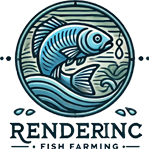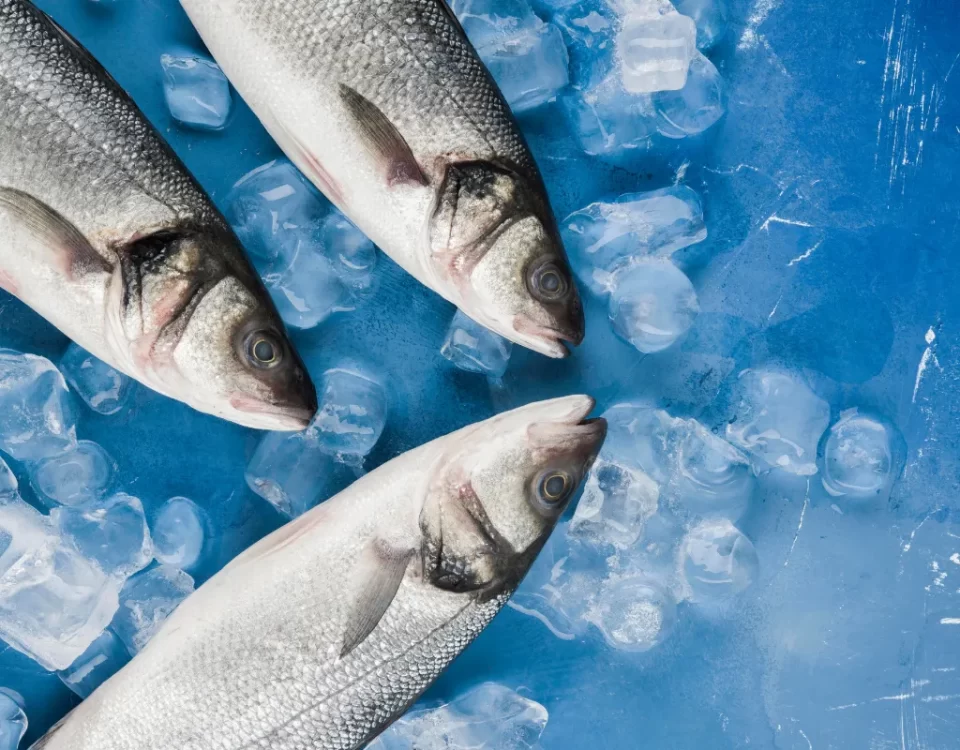How to Start a Profitable Fish Farming Business

Aquaculture Innovations: How Technology is Boosting Global Fish Production
August 17, 2024
How to Achieve Eco-Friendly Fish Farming Practices
August 20, 2024Understanding the Fish Farming Industry
The global fish farming industry has seen significant growth over the past few decades, meeting the increasing demand for seafood products. Fish farming, also known as aquaculture, involves the breeding, rearing, and harvesting of fish in controlled environments. According to the Food and Agriculture Organization (FAO), fish farming contributes to nearly half of the world’s total fish consumption. Countries like China, India, and Vietnam are among the leading producers in the industry, with a wide variety of fish species being cultivated for commercial purposes.
Types of Fish Farming Systems
Fish farming can be carried out using various systems, each with its own pros and cons. Pond aquaculture is one of the oldest and most common methods, where fish are raised in ponds or lakes. This system is cost-effective and suitable for a wide range of fish species. Tank systems involve raising fish in enclosed tanks or containers, providing more control over environmental conditions. Cage aquaculture, on the other hand, involves raising fish in floating cages in natural water bodies, offering high stocking densities and good water circulation.
Benefits and Challenges of Fish Farming
Compared to traditional fishing, fish farming offers several advantages. One key benefit is year-round production, as fish farming is not dependent on seasonal variations like wild fisheries. Fish farming also allows for species diversification, enabling farmers to cultivate a wide range of fish species based on market demand. Additionally, fish farming can help relieve pressure on wild fish populations, promoting sustainable seafood practices.
However, fish farming also presents challenges that aspiring fish farmers should be aware of. Disease management is a critical issue in fish farming, as densely stocked fish are more susceptible to diseases. Water quality maintenance is another challenge, as ensuring optimal water conditions is crucial for fish health and growth. Furthermore, securing sustainable feed sources and managing environmental impact are important considerations for running a successful and ethical fish farming business.
Research and Planning
When embarking on the journey of starting a profitable fish farming business, thorough research and meticulous planning are essential steps to set a solid foundation for success. Conducting comprehensive market research is the initial key to identifying the demand for specific fish species in your target market. Understanding the preferences and consumption patterns of potential customers will guide you in selecting the most sought-after species that will maximize your profits.
Market Research
Diving deep into market research involves analyzing factors such as consumer demographics, competitor offerings, and pricing strategies. By evaluating these elements, you can strategically position your fish farming business to stand out in a competitive market. Identifying niche opportunities or unmet demands can give you a competitive edge and ensure the sustainability of your business in the long run.
Business Plan Development
Once you have a clear understanding of the market dynamics, the next crucial step is to develop a detailed business plan. This plan should encompass your goals, financial projections, budget allocation, and resource requirements. Mapping out a strategic roadmap will not only serve as a guide for your operations but also attract potential investors or financial institutions for funding support.
Permits and Licenses
Compliance with regulatory requirements is paramount in the fish farming industry. Before commencing operations, it is imperative to obtain all the necessary permits and licenses mandated by local authorities. Adhering to legal obligations not only ensures the legitimacy of your business but also mitigates the risk of facing penalties or shutdowns due to non-compliance. Engaging with regulatory bodies and seeking expert advice on licensing procedures will streamline the process and set a solid regulatory framework for your fish farming venture.
Choosing the Right Fish Species
When starting a fish farming business, one of the critical decisions you need to make is choosing the right fish species to rear. This decision will significantly impact the success and profitability of your venture. To make an informed choice, consider evaluating different fish species based on market demand, growth rate, and environmental requirements.
Market Demand
Before selecting a fish species to farm, research the market demand for various types of fish in your target market. Identify popular choices among consumers, as well as any niche or specialty markets that may offer higher profit margins. Tilapia, Catfish, and Trout are commonly in high demand due to their versatility in cooking and widespread popularity.
Growth Rate
The growth rate of a fish species is another crucial factor to consider. Some species grow faster than others, allowing you to bring your product to market sooner and increase your turnover rate. Tilapia is known for its rapid growth and efficient feed conversion, making it a popular choice for fish farmers looking to quickly scale their operations.
Environmental Requirements
Each fish species has specific environmental requirements, including water temperature, pH levels, and oxygen requirements. Ensure that you choose a species that aligns with the natural conditions of your farming environment. For instance, Trout thrives in cold, oxygen-rich water, whereas Tilapia can tolerate a wide range of temperatures and lower oxygen levels.
Resources and Expertise
Consider your available resources and level of expertise when selecting a fish species. Some species may require more specialized equipment, infrastructure, or knowledge to rear successfully. Catfish, for example, are relatively hardy and easy to rear, making them a suitable choice for beginner fish farmers with limited resources.
By carefully evaluating market demand, growth rates, environmental requirements, and your own resources and expertise, you can choose the right fish species to start a profitable fish farming business. Conduct thorough research and consider seeking advice from experienced fish farmers to ensure your selection aligns with your long-term goals and objectives.
Setting Up Your Fish Farm
When embarking on the journey of starting a profitable fish farming business, one of the crucial initial steps is setting up your fish farm infrastructure. At the core of this process is selecting the most appropriate location for your farm, which can significantly impact the success of your venture. You must decide whether a land-based or water-based fish farm suits your specific requirements and the type of fish you aim to cultivate.
Choosing the Best Location
For a land-based fish farm, proximity to market access, availability of fresh water sources, and overall environmental conditions play a pivotal role. Conversely, a water-based fish farm requires a location with sufficient water depth, appropriate water quality, and considerations for potential environmental impacts. Conduct thorough research or consult with experts to determine the optimal setting that aligns with your business goals.
Constructing Fish Ponds, Tanks, or Cages
According to the chosen fish species and the farming method you opt for, such as pond farming, tank culture, or cage farming, designing and building the right infrastructure is paramount. The size and layout of fish ponds, tanks, or cages should be tailored to accommodate the growth and behavior patterns of the fish species you intend to raise. Proper planning and construction are essential to ensure the well-being and growth of your aquatic livestock.
Installing Necessary Equipment
Equipping your fish farm with essential tools and systems is a critical aspect of its overall setup. Feeding equipment to provide balanced nutrition, aeration systems to maintain optimal oxygen levels, and water quality monitoring devices are indispensable components. Attention to detail in installing and maintaining this equipment is key to establishing a thriving fish farming operation that promotes healthy fish growth and maximizes productivity.
Ensuring Operational Efficiency
To achieve long-term profitability, focus on optimizing operational efficiency throughout the setup phase. Implementing best practices in the layout and functionality of your fish farm can streamline daily tasks and reduce operating costs. By investing time and effort in setting up a well-organized and efficient fish farming infrastructure, you lay a solid foundation for sustained success in the industry.
Embrace the challenges of setting up your fish farm with determination and meticulous planning, keeping in mind the diverse factors that contribute to a profitable and sustainable business model.
Stocking and Feeding Fish
When starting a profitable fish farming business, one of the crucial steps is sourcing high-quality fingerlings or juvenile fish. It is essential to obtain fish stock from reputable suppliers to ensure the health and growth potential of your fish. Research local suppliers who specialize in providing healthy and disease-free fingerlings or juvenile fish of the species you plan to farm. Establishing a good relationship with a reliable supplier can set a strong foundation for the success of your fish farm.
Selecting High-Quality Fingerlings or Juvenile Fish
Prioritize selecting fingerlings or juvenile fish that exhibit vibrant colors, active behavior, and robust body structures. Inspect the fish for any signs of disease or deformities before purchasing. Choose fish stock that matches the specific requirements of your farming system and environmental conditions. Consult with experts or experienced fish farmers to determine the most suitable species and strains for your farming operation.
Implementing a Feeding Schedule
To promote healthy growth and maximize the profitability of your fish farming business, it is essential to implement a feeding schedule tailored to the nutritional needs of the fish species. Research the dietary requirements of the fish species you are farming, including the optimal protein, fat, carbohydrate, vitamin, and mineral content. Work with a nutritionist or aquaculture specialist to formulate a nutritionally balanced feed that supports growth and overall fish health.
Monitoring Fish Growth and Health
Regularly monitoring fish growth and health is vital for ensuring the success of your fish farming venture. Establish a monitoring system to track key indicators such as growth rates, feed conversion ratios, and overall fish health. Keep detailed records of feed consumption, water quality parameters, and any observed abnormalities or illnesses. By closely monitoring your fish stock, you can proactively address any issues that may arise and make informed decisions to optimize their growth and well-being.
By prioritizing the sourcing of high-quality fingerlings, implementing a tailored feeding schedule, and maintaining diligent monitoring practices, you can set the stage for a profitable fish farming business. Investing time and effort in stocking and feeding your fish properly will ultimately lead to healthy, thriving fish stock and increased profitability for your farming operation.
Managing Water Quality
Proper management of water quality is crucial in ensuring the health and growth of your aquatic livestock in a fish farming business. Maintaining optimal water quality parameters such as temperature, pH, and oxygen levels is paramount for the well-being of your fish. Temperature plays a vital role in fish growth and metabolism; therefore, it is essential to monitor and control the water temperature within the suitable range for the species you are cultivating.
Additionally, monitoring and adjusting the pH levels of your water environment are imperative. Fish are sensitive to pH fluctuations, and keeping the pH stable within the ideal range is essential to prevent stress and potential health issues. Regularly checking and maintaining adequate oxygen levels in the water is also crucial. Oxygen is necessary for fish respiration, and low oxygen levels can lead to reduced growth rates and even mortality.
To uphold optimal water quality, frequent water testing and treatment routines should be implemented. Conducting regular water tests for parameters such as ammonia, nitrites, nitrates, and dissolved oxygen levels is essential to identify any deviations from the desired conditions. Based on the test results, appropriate water treatments, such as dechlorination or aeration, may be required to maintain the quality of the water.
Preventing disease outbreaks in a fish farming business can be achieved through proper sanitation and biosecurity measures. Good sanitation practices, including regular cleaning of tanks, filters, and equipment, help reduce the buildup of organic matter and pathogens that can compromise water quality. Implementing biosecurity protocols, such as controlling external sources of contamination and restricting visitor access, can help prevent the introduction and spread of diseases among your fish.
By prioritizing the management of water quality through monitoring, testing, and adopting appropriate treatment and preventative measures, you can create a healthy and thriving environment for your aquatic livestock in your fish farming business.
Harvesting and Marketing
When it comes to harvesting your fish, having a well-established schedule is crucial for maintaining a profitable fish farming business. By setting a regular harvesting routine, you can ensure that you maximize your profits by selling fish at the peak of their market value while also minimizing losses due to overstocking or underutilization of resources. Consider factors such as the growth rate of your fish species, market demand, and the carrying capacity of your fish farm when planning your harvest schedule.
Establishing a Harvest Schedule
To establish an effective harvest schedule, monitor the growth rates of your fish closely. This will allow you to predict when your fish will reach marketable size and plan your harvest accordingly. Consider staggering your harvests to ensure a continuous supply of fish for sale. Additionally, factor in seasonal variations that may impact fish growth rates and market demand when creating your schedule.
Exploring Marketing Channels
To market your fish effectively, it’s essential to explore a variety of marketing channels to reach a diverse customer base. Consider selling your fish at local markets, supplying restaurants with fresh seafood, and setting up online sales channels to reach a wider audience. Each marketing channel offers unique opportunities to showcase the quality of your fish and differentiate your products from competitors.
Building Relationships with Buyers
Building strong relationships with buyers and distributors is key to ensuring a steady stream of sales for your fish farming business. Consider offering promotional deals, discounts, or custom packaging options to attract buyers. By providing exceptional customer service and consistently delivering high-quality fish, you can establish a reputation as a reliable supplier in the market. Communicate regularly with your buyers to understand their needs and preferences, adapting your marketing strategies accordingly.
Leveraging Online Sales
In today’s digital age, online sales have become an increasingly important aspect of marketing for fish farming businesses. Create a user-friendly website or online store to showcase your products and attract customers from different locations. Utilize social media platforms and online advertising to reach a wider audience and drive traffic to your online sales channels. Consider offering shipping options to customers outside your local area to expand your reach and increase sales opportunities.
Scaling Up and Diversifying
As you establish your fish farming business and gain a foothold in the market, it’s essential to consider scaling up your operation strategically. Assess market demand trends, analyze your profitability margins, and determine the feasibility of expanding your fish farming endeavors. Explore opportunities to diversify your product range to meet evolving consumer preferences and tap into new revenue streams.
Expanding Based on Market Demand and Profitability
Scaling up your fish farming business requires a keen understanding of market dynamics. Conduct thorough market research to identify demand-supply gaps and potential growth areas. By aligning your production levels with consumer preferences, you can optimize your returns and achieve sustainable growth. Consider collaborating with distributors and retailers to reach a broader customer base and capitalize on emerging market opportunities.
Diversifying into Value-Added Products
In addition to expanding your core fish farming activities, exploring value-added products can enhance the profitability of your business. Consider investing in processing facilities to produce smoked fish, fish fillets, or fish oil. These value-added products not only command higher prices but also cater to diverse consumer needs. By diversifying your product range, you can minimize market risks and create a competitive edge in the industry.
Investing in Innovation and Technology
To stay ahead in the competitive fish farming industry, invest in innovation and technology to improve your operational efficiency and sustainability. Adopting advanced aquaculture techniques, automated feeding systems, and water quality monitoring tools can boost productivity and reduce production costs. Embrace sustainable practices such as recirculating aquaculture systems (RAS) to minimize environmental impact and enhance the quality of your fish products.
By strategically scaling up your fish farming business, diversifying your product offerings, and embracing innovation, you can position your venture for long-term success in the thriving aquaculture sector. Remember, sustainable growth requires a combination of strategic planning and proactive decision-making. As you navigate the complexities of the fish farming business, stay abreast of industry trends, prioritize continuous learning, and adapt to changing market dynamics to unlock the full potential of your endeavor.

Michael Rivers is an experienced aquaculture enthusiast with over a decade of hands-on knowledge in fish farming and sustainable aquatic systems. Passionate about promoting eco-friendly practices, he shares his expertise on fish breeding, water management, and the latest advancements in aquaculture technology. Through his blog, Michael aims to help both beginners and seasoned fish farmers achieve success in their ventures while contributing to the growth of sustainable food production.




